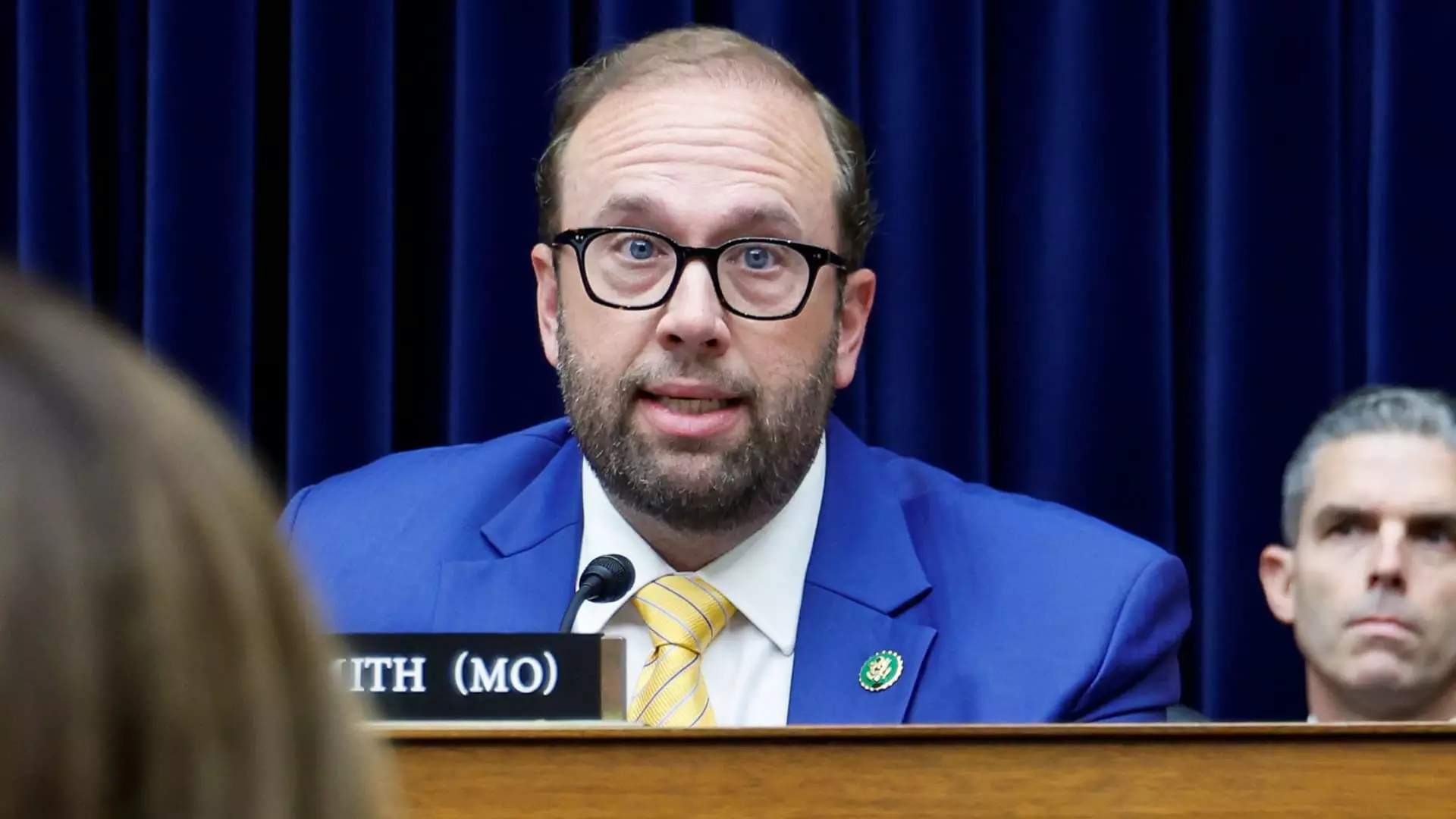The House Republicans’ recent maneuver to advance President Trump’s tax package is a spectacle worth scrutinizing. Despite the bold promises of economic growth and support for the middle class, the legislative endeavor, which includes trillions of dollars in tax breaks, stands to benefit primarily the wealthier segments of society while leaving important details shrouded in confusion. With a tight party-line vote in the House Ways and Means Committee signaling the advancement of this legislation, the motivations behind such drastic tax breaks raise alarm bells.
Republicans touting their affection for tax cuts often overlook the broader implications of such legislation. The proposed increases to the state and local tax (SALT) deduction, capped at $30,000 for high-income earners, exemplify this disparity. While some lawmakers represent high-tax states and passionately advocate for a higher SALT cap, it is evident that the tax structure is increasingly skewed to favor those who already hold the lion’s share of the nation’s wealth. This inequitably benefits affluent constituents while the middle and lower-income brackets continue to bear the brunt of the tax burden.
The Complexity of Legislative Intent
Legislative negotiations are rarely straightforward, and the proposed tax changes are no different. Chairman Jason Smith recently declared his commitment to working closely with the White House to deliver what they call “One, Big, Beautiful Bill.” Yet, any optimism surrounding such grandiose claims requires skepticism. The cacophony of overlapping priorities and conflicting agendas among Republicans in the House further complicates the path forward.
House Republicans seem to find comfort in the successful passage of the Tax Cuts and Jobs Act (TCJA) of 2017, using it as a blueprint to promote their current legislative actions. However, as the impacts of TCJA become increasingly evident, it raises critical questions about whether the promised benefits materialized for average Americans. Proponents of the current tax proposals claim it will create jobs and spur economic growth, yet numerous studies highlight that wealth concentration tends to improve only the financial standing of a select few. Tax breaks do not universally translate to wage increases or job creation in low- and middle-income communities.
Serious Questions of Fairness
The proposed legislation creates a $4,000 deduction for older Americans instead of exempting Social Security income from taxation altogether. Many experts contend that this approach may offer little respite to retirees reliant solely on Social Security. The $4,000 deduction, set to incur a massive $90 billion cost over a decade compared to the staggering $1 trillion expenditure if Social Security income were exempt, indicates that the Republicans prioritize budgetary constraints over true support for vulnerable populations. This begs the question: what is the point of crafting tax legislation that ultimately overlooks the very individuals it purports to assist?
Furthermore, the child tax credit debate presents a complex picture. Revisions designed to temporarily raise the child tax credit to $2,500 per child may appear generous, yet these changes are remarkably limited in their scope. Critically, the current proposal still leaves approximately 17 million children lacking access to the tax relief intended to support low-income families. It becomes evident that legislative measures too often prioritize fiscal optics over equitable solutions that address the needs of disenfranchised populations.
Confronting the Reality of Economic Disparity
The continued embrace of tax cuts centered around populist rhetoric juxtaposed with the harsh realities of growing economic disparity cannot be ignored. The very premise of these tax reforms, underpinned by the idea that they instigate investment and growth, hardly holds water when weighed against the scale of wealth accumulation at the top. Discomforting questions arise: Why are the needs of average citizens consistently sidelined? Why does Republican rhetoric bend toward promises of prosperity, yet actions only enhance existing inequities?
Indeed, the upcoming House vote may represent just the latest battle in an ongoing war over economic philosophy. With the potential sizeable changes looming in the Senate, it becomes all the more critical for legislators to confront the broader implications of their policies with an eye toward achieving a fairer and more equitable tax system. The interest of future generations hangs in the balance, and half-measures cloaked in populist language will not suffice. The question remains: can we imagine a tax code that genuinely uplifts all Americans or are we destined to repeat the same cycle of harmful priorities?

